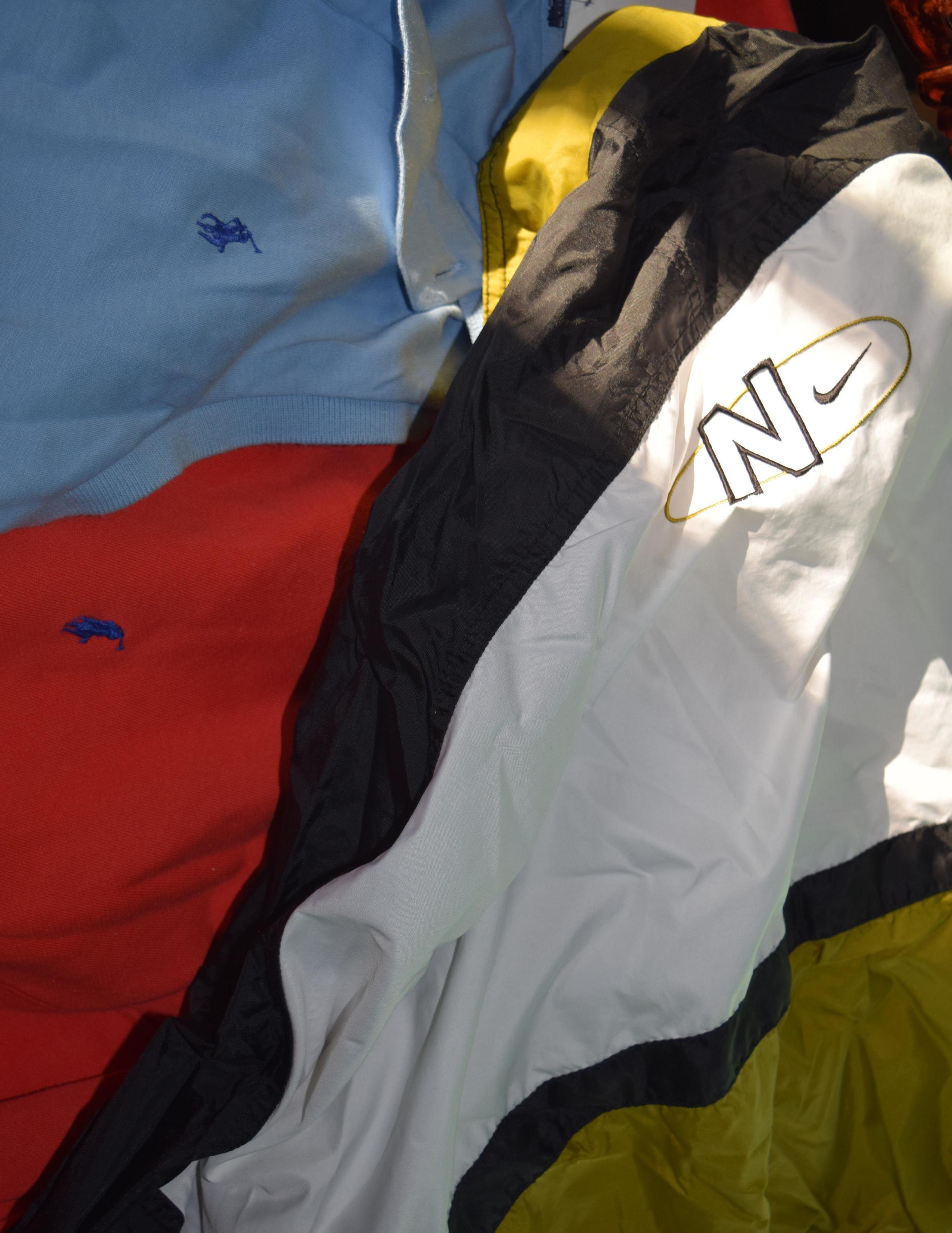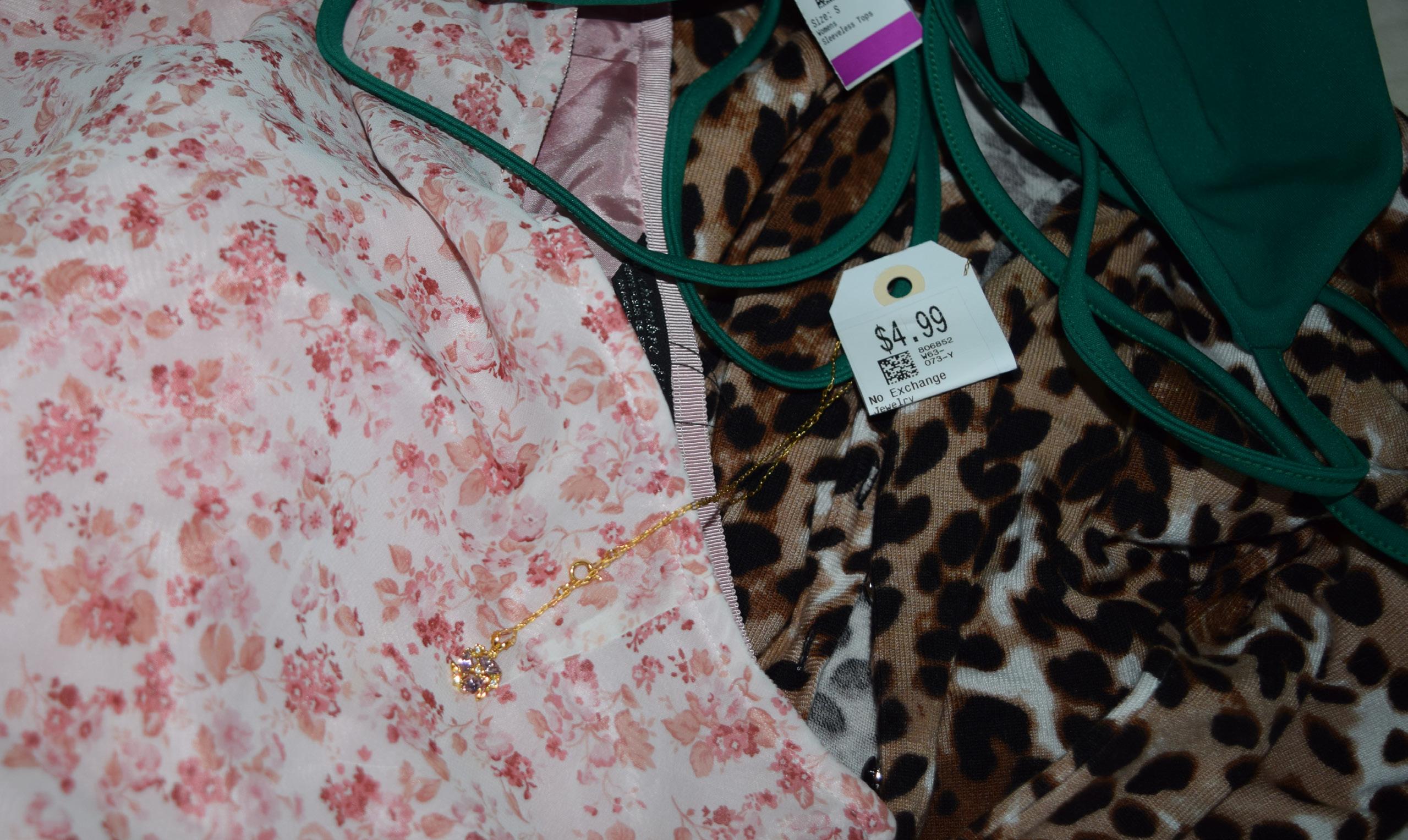
7 minute read
Thrifted for Fashion 101
by Gloria Lee
When I was younger, I had a minor repulsion to thrift stores. Yes, it was a great place to find little home decor pieces, such as photo frames and coasters, but I rarely thought of it as a place to go clothes shopping.
Advertisement
It wasn’t because I couldn’t stand to wear used clothes (I grew up wearing hand-me-downs), but rather because I found most thrift stores’ clothes unappealing or unsuitable for me. A lot of clothes are donated due to being out of trend, and that doesn’t typically leave a lot of good options to browse through. Additionally, those seemingly endless racks were overwhelming.
However, as I’ve grown up, my views on thrifting have changed. I got into thrifting after viewing Youtubers and bloggers succeed at finding great clothes at cheaper prices, as well as finding unique ways to style a thrift find that I would personally find unattractive.
As a college student on a budget, I started obsessively browsing Instagram shops selling cool thrifted items. That inspired me to try a Goodwill trip and I found a couple of pieces from name brands like Nike and Adidas. Since then, multiple successful (and unsuccessful) thrift trips followed, and I’ve scored anything from Ralph Lauren sweaters to vintage skirts.
On the other hand, some people grew up thrifting with their parents and it has become a regular part of their lifestyle. For example, sophomores Molly Landaeta and Emma Harrington both grew up going to thrift shops with their moms. They found thrifting as a way to establish their own individual styles.
- Emma Harrington
But there are a lot of other reasons why shopping secondhand has become so important.
In today’s heightened social awareness regarding waste and needless consumerism, thrifting has become more acceptable and even trendy. The U.S. EPA estimates 3.8 billion pounds of post-consumer textile waste is recycled, but also notes that this amount only accounts for 15% of total textile waste. In other words, the other 85% end up in landfills. It’s a partial reason why our pollution problem has grown so monstrous.
Furthermore, the production of clothes alone can harm the environment. Producing synthetic fibers such as polyester requires a lot of energy. Additionally, according to the Guardian, the continuous washing of polyester clothes releases non-biodegradable microplastics that end up in our oceans.
- Emma Harrington
Secondhand shopping helps prevent clothes from ending up in the landfills and keeps the fashion cycle circular.
Additionally, vintage clothing trends are returning to the fashion industry. When I was growing up in the early 2000s, there seemed to be a slight stigma against secondhand. Telling someone you thrifted a certain piece came off as a subtle way of saying admitting ‘I can’t afford new clothes’ that resulted in shame or embarrassment.
Nowadays, people happily share their coolest thrift finds, rarely in judgment. Harrington, for instance, loves “older clothing styles, such as turtleneck sweaters, high-rise/baggy jeans, and funky t-shirts”. Mom jeans and dad sweaters are increasingly and openly worn by younger generations. Society has generally become more accepting of different styles that are not confined by gender or generational expectations.
Below are some useful tips for a successful thrift trip.
Find inspiration
I found motivation to scout the thrift racks from watching videos. Youtubers I highly suggest checking out include HaleysCorner, Sarah Dunk, and AlexaSunshine83. A majority of their videos center around thrift vlogs and hauls, but also helpful tips and DIYs. The fact that they are all young Gen-Z or millenial women make their videos easier to relate to.
Browsing Pinterest and Instagram thrift shops is another good way to see what’s possible to find at the thrift. For example, a Minnesota based shop is @urbanoutthrifters on Instagram.
Although you don’t have to purchase from these Instagram stores (be aware of scam shops), scrolling through their feeds gives a general idea of what people are capable of finding. Additionally, if you do decide to buy from these shops, remember it’s always great to support a small local business.
Take advantage of smaller thrift stores, sale days, and the bins
It always feels more gratifying to find a stylish piece at the thrift store than at a normal retail seller. However, on my recent thrift trips, I’ve noticed thrift chains such as Goodwill and Savers inflating prices on certain donations from more well known and popular brands, such as Columbia, Levi’s, Calvin Klein, etc. Perhaps they’ve noticed the growing popularity of thrifting fashion.
The best way to find more expensive brands at better deals is to take advantage of sale days. Savers, for example, has 50% off of their clothing and shoes on holidays such as Presidents' Day and Memorial Day. Goodwill also does sale days on specific tag colors.
Additionally, try thrifting at the Goodwill Outlet bins. Instead of sweeping through racks, you shop by digging through multiple bins filled with inventory. How much you owe is determined by weight instead of per item.
However, it’s not the most sanitary option, so be prepared with gloves and hand wipes. Patience is very much required.
- Molly Landaeta
The ‘good’ includes Harrington’s new favorite pair of Wrangler jeans, which she found in the bins.
Supporting smaller, independently owned shops is another way to possibly avoid the price inflation. They are typically less visited compared to the more popular chains, therefore their selection is usually less picked over. Landaeta and Harrington both recommend checking out Flying Pig Thrift, which is a few steps away from the Hamline campus.
“I always find at least one thing to buy when I stop in,” Landaeta says.
Try your best to look through everything
One thing my impatient self has learned how to deal with is looking thoroughly through the stuffed racks to spot that one good find. I try to reserve a lot of time, sometimes a couple of hours to a full day, if I’m planning on going full out thrifting. I then choose a rack, push all the hangers to one side, and quickly swipe through all of them until something I like catches my eye.
If you don’t have a lot of time on your hands, aim to look through a select couple of sections. For example, look through everything in the men’s sweater section, or the dresses.
Another option is that I like to walk around the racks sometimes and look for a pattern or color that catches my eye, and then start there. If you find something, great, but don’t get discouraged if you don’t.

Also, if you get tired out, give yourself a break. Sometimes I try to remotivate myself through watching thrift vlogs or browsing social media for ideas.
Keep an open mind while shopping
This is probably one of most important tips in order to have success in thrifting.
- Molly Landaeta
Tagged sizes can actually fit differently depending on brand. The men’s sections are frequently lauded for their selection of t-shirts, sweaters, flannels, and vintage jeans. Harrington adds, "Try something on even if you feel questionable about it. Some of my favorite pieces have been ones that I look at and think, ‘maybe I will like this, but it might be a little too funky for me.’ Once I try it on, I might love it!”
Thinking outside the box and planning DIYs, such as cropping larger tops and sweaters or distressing jeans, are fun ways to turn items into trendier pieces. Even the little girls and boys section can have tops that will fit as a crop. Small holes and tears can be fixed. Landaeta also likes looking for fabrics that she can DIY into something else, such as a pillowcase.

Furthermore, Landaeta recommends avoiding anything with stains, as they probably can’t be washed out. Finally, try not to think about looking for something to impress others if you’re shopping for yourself. If it’s a cool piece from a name brand, but not something you would actually wear, then that leaves risk for perpetuating the cycle of textile waste.
Incorporating secondhand shopping into your lifestyle is an eco-conscious and fun way to vamp up your closet. Not every trip is going to be a gold mine, but constant practice and open mindedness will help you become a pro thrifter.









